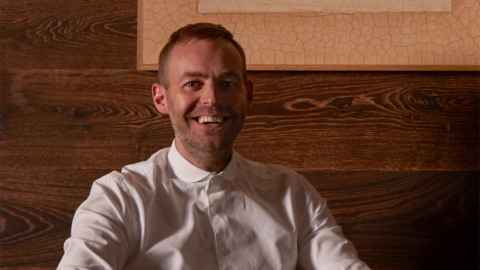Nat Cheshire
Cheshire Architects Ltd.

Be honest. Would you set your alarm for 2am to go to work if you didn’t have to?
It almost seems like a dumb question until you realise there are people who do exactly that.
One of them is Nat Cheshire.
An emerging architectural talent and winner of several awards including becoming the youngest ever winner of Home of the Year, he describes his work as meaningful rather than fun, and finds satisfaction in that, although only a minute later in our interview Nat contradicts himself admitting that he’s never satisfied!
Cheshire Architects is a trans-disciplinary practice. It operates across fields of luxury and austerity, newness and age, roughness and refinement. But what makes Nat’s approach different from that of conventional architecture is that he and his team design, curate and cohere every part of the experience.
“We’re still a start-up of sorts operating in a high stakes environment. We constantly set out to make projects that push the culture forward. We’re ruthlessly self-critical, and try to treat every project as if it were our first – like it’s the only shot we’ve got.”
Exposure to architecture from an early age due to his father Pip, also being a well-known architect, has led to a good natured rivalry between father and son.
“Initially I had no interest in architecture. As a kid I was always very interested in painting. I watched my dad fight his way through architecture and to me it didn’t make sense. But here I am following his path. For two decades I lived in his shadow as Pip’s son; now he occasionally has to become Nat’s father, and soon we’ll both be eclipsed by the extraordinary team around us.”
Beginning his studies at Elam, Nat realised at the end of his first year that was enough. He wanted to drag art out of the gallery and into the lives of a whole city.
At 20 he had turned his bedroom into a studio and was already designing bathrooms and decks for friends of his parents.
“It was terrifying that as a kid I could draw something, and that burly adults would set-to in the mud and turn that thing into reality. There’s a magic in that. And a responsibility.”
Time at university had mixed results.
“I got a D in Practice Management, for proposing the business model that eventually got me here. But I do remember a single essay in Architectural Theory. Worth 70% of the final grade, it challenged us to posit a brave hypothesis and then pursue it aggressively – even if we ended up proving ourselves wrong. That simple act of liberation from certainty was extraordinary after two decades of education based on delivering the correct answer.”
Amongst his work, Nat has been heavily involved in helping to create Britomart, one of Auckland’s urban success stories; an organic development covering nine inner-city blocks.
“When I first moved into our apartment in the city there was no place to buy a tomato. The free market of the 80’s did enormous damage to our city; it sucked the life from it. It is exciting to take ground in the fight for a city worth living in. Working in Britomart is a privilege I don’t intend to squander”.
A question Nat often ponders during those early morning starts is how design might lead a culture into its own future?
“In a hyper-technologized world, must the role of our homes reflex? Is it the counter-balance? Is the future of home simple, rough, soft, social, analogue and – almost - regressive? And what of our cities? The occupation of our hinterland?
We want also to lead design itself into its own future. Part of that is tearing down disciplinary silos and liberating design as a broad and potent cultural weapon, not some niche aesthetic indulgence. In developing our own projects, in working from urban master planning down to web coding and apron design, we’re already deep in that fight. Next we need to drag design forward into the more vital fights of a life, bringing it to bear on acts of social, cultural and environmental entrepreneurship. That’s where we are now.
But mostly I get up each morning to raise our infant daughter to become an extraordinary woman.”